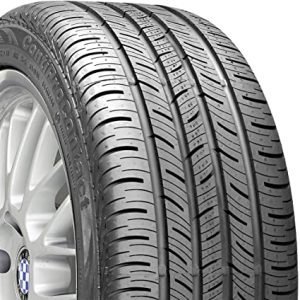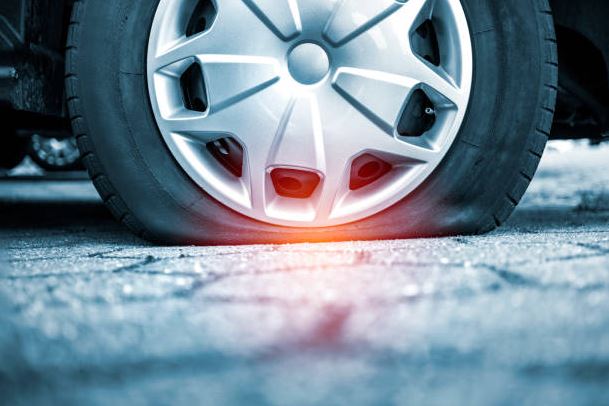Being a German tire manufacturer, Continental has a solid relationship with luxury and daily-driver car manufacturers like Audi, Tesla, and Porsche. So it is no news that the company produces well-regarded performance, touring and standard all-season tire models. But is the Run-Flat model part of their lineup?
Yes, Continental produces tires that feature self-supporting Run Flat technology, compatible with all standard rims. Unlike its ContiSeal models, Continental’s Run Flat tires are uniquely designed with a reinforced sidewall that will keep you rolling at 80 km/h for 80 km after a puncture.
Meanwhile, you may only be able to differentiate these special tires from other models once you look closely at the details.
In the rest of this post, you will learn how to easily identify a Continental Run-Flat tire, how it works, its reparability, and how it measures up compared with Run Flat tires of other brands.
Table of Contents
How Do I Know If My Continental Tires Are Run-Flats?
Generally, Run Flat tires carry an inscription/code on the sidewall that informs car owners that they are Run Flats. However, this is no standard code as it varies per manufacturer.
When you see the ‘SSR’ printing at the end of the product model description on the side wall of a Continental tire, then you know it is Run Flat. Continental tires can also be called SSR tires. So look for the SSR letters on the tire’s sidewall to be sure.
Once that is confirmed, you can be confident about driving your vehicle to the garage even after a puncture or sudden loss of pressure.
P.S.: SSR initials stand for ‘Self Supporting Run flat.’
But How Does Continental Run-Flat tire Technology Work?
If you observe standard tires during a puncture, you will notice that the sidewall becomes crushed between the rim and the road that, causes the tire to slip off the rim or a blowout, at worse.
To avoid this, Continental integrated a reinforced sidewall in their Run-Flat tires to support the tire in the event of a puncture and loss of air. As such, the sidewall will not be crushed between the rim and the road.
So when you have an SSR tire, you can continue driving when you get a puncture until you can reach the nearest garage. That distance shouldn’t be more than 80 km at a maximum speed of 80 km/h.
Can Continental Run-Flat Tires be Repaired?
Continental DO NOT recommend that you repair their SSR tires. According to the manufacturer, damage done to their Run-Flat tires in under-inflated conditions is not visible or noticeable.
The hard inserts in their tire sidewalls can be damaged in the event of a puncture, and you can’t see it. Hence, putting such punctured tires into function poses a danger.
This doesn’t imply that Run-Flat tires cannot be repaired. It all depends on the regulation of the manufacturer.
For example, Dunlop/Goodyear tire manufacturer says their self-supporting tire can be repaired by a qualified tire professional. The caveat is that the fix must be carried out after thoroughly inspecting and analyzing the tired history.
How Much Is Continental Run-Flat Tire?
As the price of a leather shoe surges above that of clogs, you shouldn’t bat an eyebrow to see that Continental SSR tires are more pricey than their standard models.
The last time I priced a Continental Run Flat tire, it sold for around $250. It depends on your car brand dealer and the variation. Meanwhile, you’d likely find Continental Run-Flat tire selling for around $200 on Tire Rack. SEE HOW MUCH THIS CONTINENTAL RUN-FLAT TIRE IS SOLD FOR ON AMAZON

Other Continental Tire Models
Safety, quality, and innovation have been the core of Continental tires since it started in 1871. The SSR tires may be among the company’s popular models, but a few other variations stand out and crack the priority list for many gearheads.
Based on customers’ satisfaction rating on Tire Rack, the Continental TrueContact, WinterContact (S.I.), PureContact LS, and ExtremeContact DWS 06 are some of the brand’s popular models.
These models may have the SSR technology but have also garnered a 4.0-star rating or above on Tire Rack and other popular retailers’ sites.
While the Continental WinterContact Snow & Ice (S.I.) is cost-friendly and made with PolarPlusTM technology, the TrueContact handles well in wet, dry, and snowy conditions.
People who buy the ExtremeContact DWS 06 model need ultra-high performance tires for sporty drives, but it also does well in snow and slush.
On the other hand, the brand splurges its ComfortRide and EcoPlus technology in the PureContact LS tire model to make it comfortable, longer-lasting, and better suited for those plying wet and dry roads.
What’s the Warranty on Continental Run-Flat Tires?
A limited warranty for defective continental materials lasts six years and above. In addition, the German tire manufacturer has a tread life warranty of up to 80,000 miles.
Continental also offers a 60-day replacement guarantee for buyers that aren’t satisfied with the Run-Flat tires (or any other model) purchased.
Bottom Line
Continental is among the leading tire manufacturers that have invested in the Run-Flat technology. As a result, their Run Flat Tires are identified with the SSR marking.
But the German manufacturer also produces replacement tires, powertrain parts, electronics, and auto safety systems.
Continental SSR tires are not cheap but are generally more affordable than Goodyear Run-Flat tire models.
Lastly, if you use Continental Run-Flat tires, ensure your vehicle has the Tire Pressure Monitoring System (TPMS).
The display of this system on your console will always alert you when the Run-Flat tire has suffered a puncture. (It is tricky to figure this out without the monitoring system)

